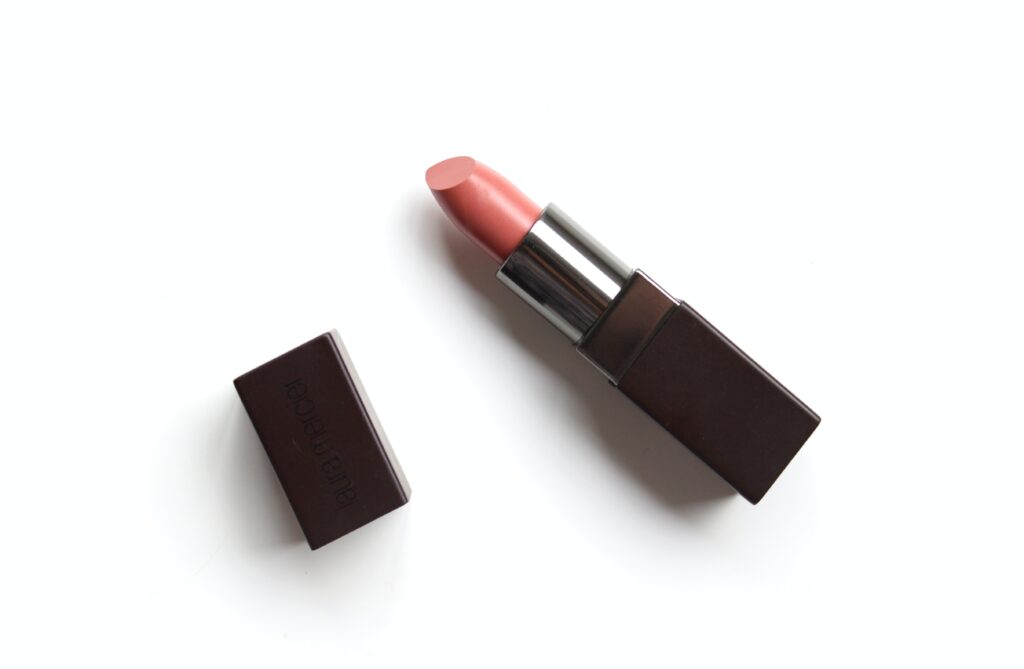
Hormonal balance—that’s what keeps us healthy and promotes well-being. In recent years, the influence of endocrine disruptors on the hormonal system has become a topic of growing concern. These disruptors are commonly found in everyday products, including those frequently used by women such as cosmetics, skincare products, or household cleaning products. (For our male readers – yes, we are aware that men also use them and great for you! You can also benefit from our recommendations at the end of this text.)
As endocrine disruptors can significantly affect the delicate hormonal balance, they may also lead to far-reaching implications for health. It is crucial to understand the basics of how they work and what we can do about them to better protect women’s health.

Endocrine disruptors and women’s health
Endocrine disruptors (EDs) are tricky troublemakers in the world of hormones.
They belong to substances that can affect the endocrine system, a complex network regulating hormones (to read more about EDs click here).
In short, they can imitate natural hormones or interfere with their production, signaling, or breakdown, leading to imbalances in the body and messing with many crucial functions.
Their shady abilities have sparked concern due to their widespread presence and potential long-term impacts on human health and the environment.
Women’s bodies, with all their incredible hormonal intricacies during periods, pregnancy, and menopause, can be more sensitive to these chemicals. We know now that exposure to endocrine disruptors can lead to serious consequences that manifest in various ways. It affects not only reproductive health, menstrual cycles, and fertility, but also leads to disruptions in metabolism and increases the risk of certain cancers such as breast or ovarian cancer.
A few common sources of exposure to endocrine disruptors
Everyday items may expose women to numerous chemicals found in plastics, cosmetics, personal care products, food (both from packaging and pesticides), and even household cleaners. All of these serve as examples of sources of endocrine disruptors.

Additionally, there are three pathways for these substances to enter the body: absorption through ingestion, inhalation, and skin absorption. Exposure through the skin, especially among women, constitutes a substantial portion of total exposure to certain chemicals.
Our skin, the body’s largest organ, can easily absorb substances present in skincare and cosmetic products. Although the skin acts as a barrier protecting the body, this pathway enables endocrine disruptors to enter the bloodstream, raising concerns regarding their influence on hormonal balance.

Impact on reproductive health
Endocrine disruptors can pose many challenges to health in general but today, let’s focus on women’s health.
These chemicals have been associated with irregular menstrual cycles, disruptions in ovulation, and fertility issues. Prolonged exposure might lead to difficulties in conceiving or sustaining a pregnancy.
For women, whether or not motherhood is in the cards, reproductive health stands as a crucial component of overall well-being. In fact, reproductive hormones play a far-reaching role beyond fertility alone, regulating various aspects of health beyond the ability to get pregnant.
Some endocrine disruptors are linked to one of the most common hormonal disruptions – polycystic ovary syndrome (PCOS). PCOS is a complex condition characterized by hormonal imbalances leading to irregular periods, ovarian cysts, and potential fertility issues, posing significant health concerns. There are chemicals, such as phthalates and bisphenols, that have raised red flags due to their ability to interfere with hormones and potentially contribute to the development of this syndrome. Additionally, PCOS is not solely related to ovaries and reproductive health. This condition increases the risk of diabetes, issues with cholesterol, fatty liver disease, and cardiovascular diseases – conditions that affect the heart and blood vessels.
The impact of endocrine disruptors on women’s reproductive health cannot be underestimated. We need to keep in mind that also the good health of potential children depends on woman’s health and her well-being. By recognizing the risks and taking proactive steps to minimize exposure, we pave the way for a future where women can preserve their reproductive health and empower generations to come.

Menopause and hormonal changes
Let’s discuss menopause. Many women experience various symptoms such as hot flashes, mood changes, and sleep disturbances—these are all outcomes of a natural, though challenging, rollercoaster ride of hormonal changes that can significantly impact well-being.
Furthermore, these changes may be influenced by endocrine disruptors, potentially exacerbating menopausal symptoms and impacting bone health or cardiovascular health.
Breast health and endocrine disruptors
Studies suggest that prolonged exposure, whether at low doses or high levels, to specific endocrine disruptors may correlate with an increased risk of breast cancer, hormonal imbalances, and other breast-related issues.
Chemicals like parabens, frequently present in cosmetics and personal care products, have been studied for their ability to mimic estrogen.

Similarly, exposure to other environmental estrogens like bisphenol A (BPA) has also been associated with a higher risk of developing hormone-related cancers, including breast cancer.

Protecting women’s health – DIY
Despite the prevalence of endocrine disruptors, taking proactive steps can minimize exposure and protect your health. We have gathered a few easy-to-implement recommendations that can help reduce contact with hazardous chemicals. Start with whatever you feel most comfortable with, and gradually incorporate other tips.

While shopping – mindful product selection
Opt for products labeled “paraben-free,” “phthalate-free,” or “fragrance-free,” and seek those with an eco-certificate. Choosing natural, organic, or eco-friendly alternatives diminishes exposure to harmful chemicals.
Whenever possible, choose products packaged in glass or paper rather than plastic. This applies to both cosmetics and food items.
Select locally sourced and seasonal produce (more information here). Consuming a balanced diet rich in locally harvested fruits, vegetables, and whole grains not only reduces exposure to pesticides but also promotes overall well-being by providing lots of vitamins.
At Home
DIY. Use environmentally friendly cleaning products derived from natural solutions like vinegar, baking soda, citric acid, etc. These not only safeguard the environment but also prioritize your health. Avoid aggressive substances – highly antibacterial solutions are unnecessary for home use.

Use just enough. In Swedish, there’s a term, “lagom,” signifying the perfect amount—neither too little nor too much. Consider this principle when using cosmetics or skincare products. Using a smaller amount is often sufficient and better for both your household budget and the planet.
Ensure proper ventilation, especially in your bedroom before sleeping. Adequate sleep reduces stress hormone levels, benefiting your day. Additionally, airing rooms reduces the presence of hazardous chemicals. Sleep tight and worry less about endocrine disruptors.

Take-away tips
Transport lunch in a jar instead of a plastic container. Plastic containers for food storage can increase exposure. If you already own one, assess its condition. If scratched, damaged, or old, consider a new container, possibly made of stainless-steel this time. A fan of old glass jars? We love them as it’s a great zero-waste option! Protect them externally with fabric to prevent damage.
Opt for tap water on the go (if drinkable in your area). Invest in a glass or stainless-steel bottle and carry it wherever you go. Ultimately, it’s a cost-effective choice and minimizes plastic pollution.
Carry a reusable cloth bag with you. Put one in your purse or car for grocery shopping to avoid the need for buying additional bags.
Lastly, but equally important, ensure you take moments to rest. It’s crucial for your body to relax properly.
Remember, sleep is not just an option – it’s a fundamental human function. Finding time for yourself might involve a brief walk with your favorite music, enjoying a warm cup of tea by candlelight, or reconnecting with someone you miss. Your hormones will appreciate these efforts!

We’ll keep you updated and share more information on avoiding chemicals in our upcoming posts. Stay tuned!
Knowledge is the key. If you have it, open and take a step forward
Understanding the link between endocrine disruptors and our health empowers us to make informed choices. By taking simple steps to minimize the exposure, you can protect your well-being and pave the way for a healthier future. Avoiding chemicals that might interfere with your hormones is key. Your body will thank you by rewarding you with a healthier, calmer, and stronger version of yourself.
Image credits/source: unsplash.com and pixabay
DetoxED library (for those who want to know and read more)
Owczarek K, Kubica P, Kudłak B, Rutkowska A, Szybiak A (Olsson A), Rachoń D, Namieśnik J, Wasik A. Determination of trace levels of eleven bisphenol A analogues in human blood serum by high performance liquid chromatography – tandem mass spectrometry. Sci. Total Environ. 2018; 628-629: 1362-1368. https://doi.org/10.1016/j.scitotenv.2018.02.148
Rutkowska AZ, Diamanti-Kandarakis E. Polycystic ovary syndrome and environmental toxins Fertil. Steril. 2016; 106(4): 948-58. https://doi.org/10.1016/j.fertnstert.2016.08.031
Szybiak A (Olsson A), Rutkowska A, Wilczewska K, Wasik A, Namieśnik J, Rachoń D. Daily diet containing canned products significantly increases serum concentrations of endocrine disruptor bisphenol A in young women. Pol. Arch. Intern. Med. 2017; 127 (4): 278-280. https://doi.org/10.20452/pamw.4005
Konieczna A. (Olsson A), Rutkowska AZ, Szczepańska N, Namieśnik J, Rachoń D. Canned food as a source of bisphenol a (BPA) exposure – estimation of consumption among young women from Gdańsk, Poland. Med. Środ. 2018; 21 (1): 31-34. https://doi.org/10.19243/2018104
Rutkowska A, Olsson A, Wilczewska K, Łaczmański Ł, Kuliczkowska-Płaksej J, Jędrzejuk D, Wasik A, Milewicz A, Pasquali R, Urbanovych A, Namieśnik J. Bisphenol A impacts hormonal profile in patients with polycystic ovary syndrome but not in healthy women. Gyn. Rep. Endocr. Metab. 2020; 1(1):43-47. https://doi.org/10.53260/grem.201018
Rutkowska A, Olsson A, Piotrowska-Szypryt M, Namieśnik J. Changes in daily life reduce indoor exposure to selected endocrine disruptors in the home environment: a pilot intervention study. Acta Biochim. Pol. 2020; 19;67(2):273-276. https://doi.org/10.18388/abp.2020_5369
Rutkowska AZ, Szybiak A (Olsson A), Serkies K, Rachon D. Endocrine disrupting chemicals as potential risk factor for estrogen-dependent cancers. Pol Arch Med Wewn. 2016;126(7-8):562-70. https://doi.org/10.20452/pamw.3481
Koch CA, Diamanti-Kandarakis E. Introduction to Endocrine Disrupting Chemicals–is it time to act? Rev Endocr Metab Disord. 2015;16(4):269-70. https://doi.org/10.1007/s11154-016-9338-3
Crain DA, Janssen SJ, Edwards TM, Heindel J, Ho SM, Hunt P, et al. Female reproductive disorders: the roles of endocrine-disrupting compounds and developmental timing. Fertility and sterility. 2008;90(4):911-40. https://doi.org/10.1016/j.fertnstert.2008.08.067
Rutkowska A, Rachon D. Bisphenol A (BPA) and its potential role in the pathogenesis of the polycystic ovary syndrome (PCOS). Gynecol Endocrinol. 2014;30(4):260-5. https://doi.org/10.3109/09513590.2013.871517

